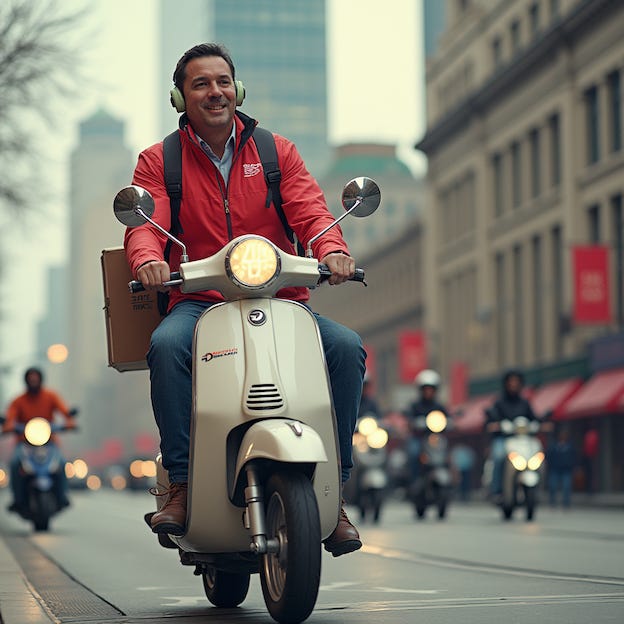DoorDash Is Taking Over Delivery (and It Just Turned Profitable)
25% YoY revenue growth, humble management, happy customers and Dashers

You can make money off the fact that people are short on time or just lazy.
I walk to the grocery store and cook my meals. But not everyone is like me. And this is why I see Uber Eats ads and delivery guys in major German cities. People order food more and more.
That made me look at a public company that does deliveries, DoorDash. I naively thought it was a distant runner-up way behind Uber.
It took me a minute to realize I was wrong. Because
DoorDash’s market cap of $80 billion is about half of Uber's ($147 billion).
DoorDash holds two-thirds of the meal delivery market in the US, Uber one quarter.
DoorDash stock shows good technical patterns that suggest it has growth potential.
You can’t ignore DoorDash.
The chart says it all
I pre-select companies based on their stock charts.
All information about a company including valuation is in its stock chart. I choose charts where valuation is straightforward.
DoorDash’s intermediate-term horizontal trend says the professional side of the market was in control. There are few retail traders in the mix.
$180 and $163 are intermediate support and $142 is strong support. The stock is unlikely to dip below that if something goes wrong.
DASH stock shows a pre-earnings run (it reports on February 11). Nobody can tell what will happen after the report. I’m keeping the stock on a watchlist.
The past few months show that the price is aligned with the company’s fundamentals in the red rectangle. And they’re likely to improve.
Here’s why DoorDash is on a growth trajectory.
It does its best to help merchants find their customers
The pandemic accelerated the transition to delivery services like DoorDash and Uber Eats. DoorDash handled the spike in delivery orders in suburban areas. Uber Eats is more focused on urban markets.
DoorDash's business model is based on a multi-sided marketplace. It connects customers and merchants (restaurants, grocery stores, etc.) via delivery drivers called Dashers. It’s a vast network where the company is king.
DoorDash charges merchants and customers, takes a cut, and pays the Dasher who delivers the order.
The core revenue stream is commissions from restaurants. They range between 15% and 30% of the order and depend on the service and market conditions. Restaurants can choose different plans:
basic
premium (more sales and customers)
partner plan (max sales in biggest delivery areas)
Customers pay delivery fees which vary based on distance, demand, and order size. DoorDash adds a service fee to cover operational costs. In peak hours the delivery prices go higher if you want “priority delivery.”
DoorDash offers a subscription service, DashPass. You get “free” deliveries for $9,99 a month or $96 a year if the price of your order is above a minimum subtotal. DashPass is a recurring source of revenue.
OK, this no-brainer business model won’t surprise anyone. Just get food delivered and charge for it. This is why DoorDash has additional services.
Keep reading with a 7-day free trial
Subscribe to Stay Invested to keep reading this post and get 7 days of free access to the full post archives.




